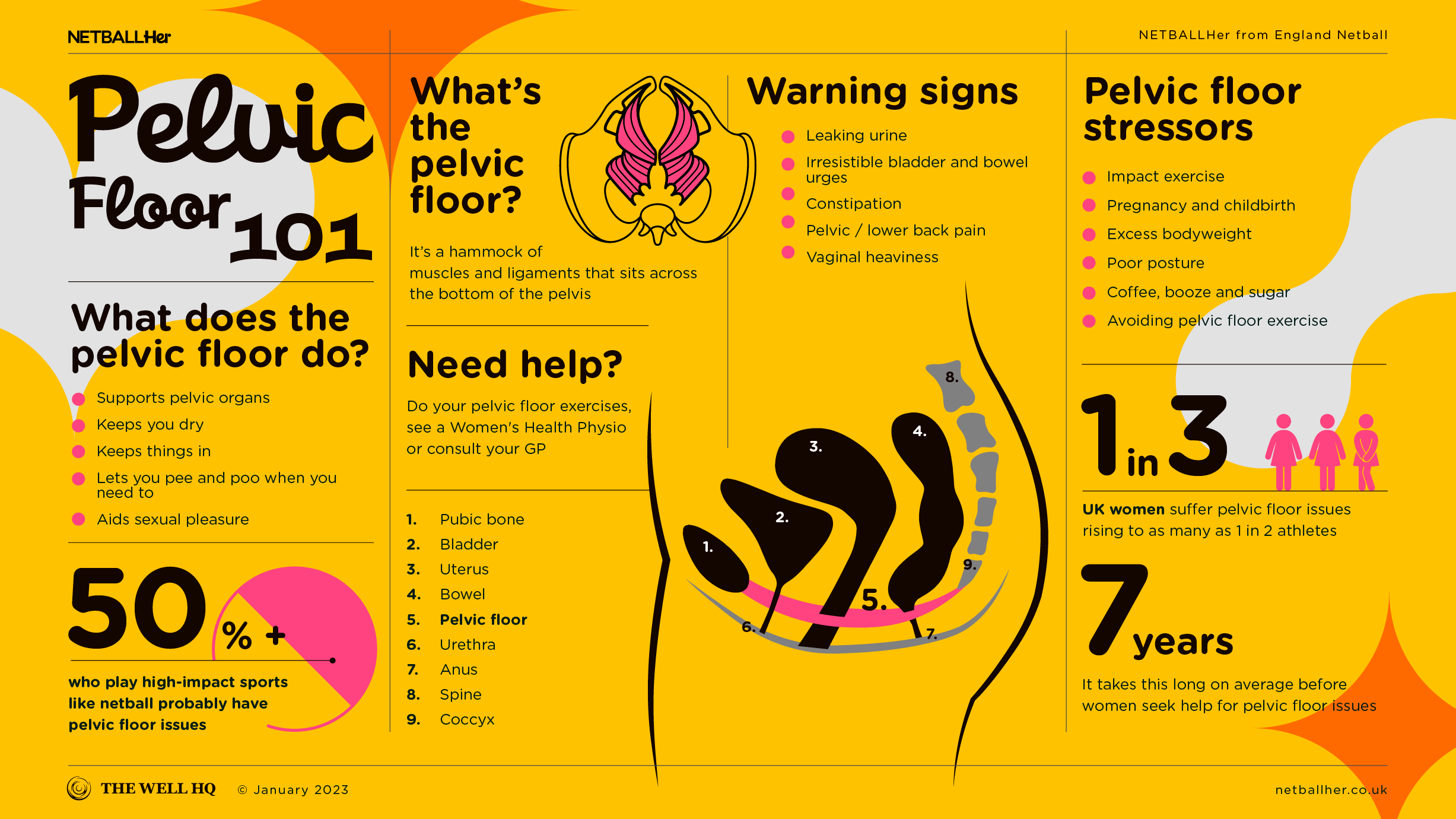Click play for an audio readthrough of this article
Several factors increase your likelihood of having pelvic floor issues, but we can all take action.
Aside from normal stresses, wear and tear, several factors and life events negatively impact the pelvic floor. Here’s a rundown of what these are and what you can do.
Pregnancy and childbirth
It doesn’t matter how the baby comes out of your body – being pregnant puts stress on your pelvic floor. With extra weight to carry, posture pressure and volatile hormones – it’s a time your pelvic floor needs serious TLC.
Birth itself also presents a number of challenges. Regardless of whether birth is vaginal, assisted delivery or C-Section, the connective tissue within your pelvis will be impacted. That means anyone experiencing pregnancy or childbirth will need support with their pelvic health.
We strongly advise that all pregnant women visit a Women’s Health Physio (WHP) in their second trimester to discuss the pelvic floor exercises that are best for you, and to discuss your pelvic floor in relation to your birth plan. With WHP support you can make an informed decision as to what birth type is best for you and your baby, and you can later discuss your return to exercise, training and competition.
Weight
The more weight that’s above your pelvis the harder the pelvic floor has to work. So if you’re overweight or obese, losing weight can reduce your symptoms. It sounds simple … but we all know weight-loss isn’t easy.
Nonetheless, even 10% weight loss can reduce symptoms by 50%.
Weight lifting and impact exercise
Too much of either commonly leads to pelvic floor issues, but there are plenty of solutions to consider. A visit to a WHP and keeping up with your pelvic floor exercises at a minimum, and from there they may suggest changes to your breathing technique during training and reps.
If you need additional support, there are also re-positioning weights belts and internal vaginal supports – it might all be a little trial and error but you really shouldn’t have to abandon the exercise you love.
Hysterectomy
The female pelvis is designed to accommodate three vital organs: the bladder, the bowel and the uterus. If the uterus is removed, for whatever reason, it can result in feelings of heaviness in the pelvic floor and, in some cases, prolapse.
A hysterectomy can also trigger early menopause and, if it does, your pelvis will quickly start to miss its familiar supply of oestrogen from the ovaries. This can all impact the pelvic floor’s effectiveness and result in symptoms.
Advice -if you have a hysterectomy ask about your pelvic health before the op and absolutely afterwards and make sure that you’re well supported, which may well mean visiting a WHP privately.
Stimulants and you
As we get older (think 40-plus) we tend to become more sensitive to foods and drinks that never before caused problems. Key offenders include caffeine, sugar and alcohol, all of which can cause sudden and irresistible urges to empty our bladders or bowels.
It’s vital to learn your triggers and reactions so you can connect dots and adjust your intake. Say you learn that coffee triggers a bowel movement within 15 minutes you can use that info to your advantage. A reliable way to empty your bowels can be a good thing … an accident during training not so much.
Similarly, if tea triggers an overwhelming urge to pee then best to avoid it immediately ahead of netball training or games (or meetings or car trips or long walks …)
Constipation
Constipation stretches the pelvic floor beyond safe bounds and increases the risk of pelvic floor-related issues. In short, nobody should be constipated.
There are certain times during life, and during the menstrual cycle, when constipation is more likely so we all have to stay vigilant and work to address it. There are many tools and foods we can call upon to help but more water and vegetables are an easy first port-of-call.
Any decent health professional in this field can help you address bowel health and constipation as a matter of priority. It may feel embarrassing but it’s vital to speak up.
Check out Baz on bladders and bowels for more.
Posture pressure
Many of us, by default, suck our tummies in and adopt a rigid posture. Unfortunately, holding tension in the core impacts our ability to breathe, tightens the pelvic floor and can cause issues such as leaking urine, especially during exercise.
It’s easier said than done, but try to keep the tummy soft and relaxed as much as possible.
You might not master this in a day, but try to keep a watchful eye on yourself and identify moments / instances where you tend to tense-up or go rigid. At those moments, remind yourself to breathe, relax and let go.
Stress and Anxiety
Still on posture, when feeling stressed, anxious or under-confident, we mightn’t go rigid but instead hunch over. Basically, how we feel affects how we sit and stand and, for some of us, a slouchy posture can become the default.
The pelvic floor works best when it’s in a neutral position; stacked underneath the ribs. To understand your own posture, use your tailbone as a guide. If you tuck it under or push it out (ie if it’s not stacked straight) you may be causing or exacerbating your pelvic floor discomfort.
As a reminder, the content of the course belongs to The Well HQ. You have permission to access and use the content yourself or, if you are an organisation, for the number of users selected, but are not otherwise permitted to share such content with others, all in accordance with our Course Terms and Conditions.

